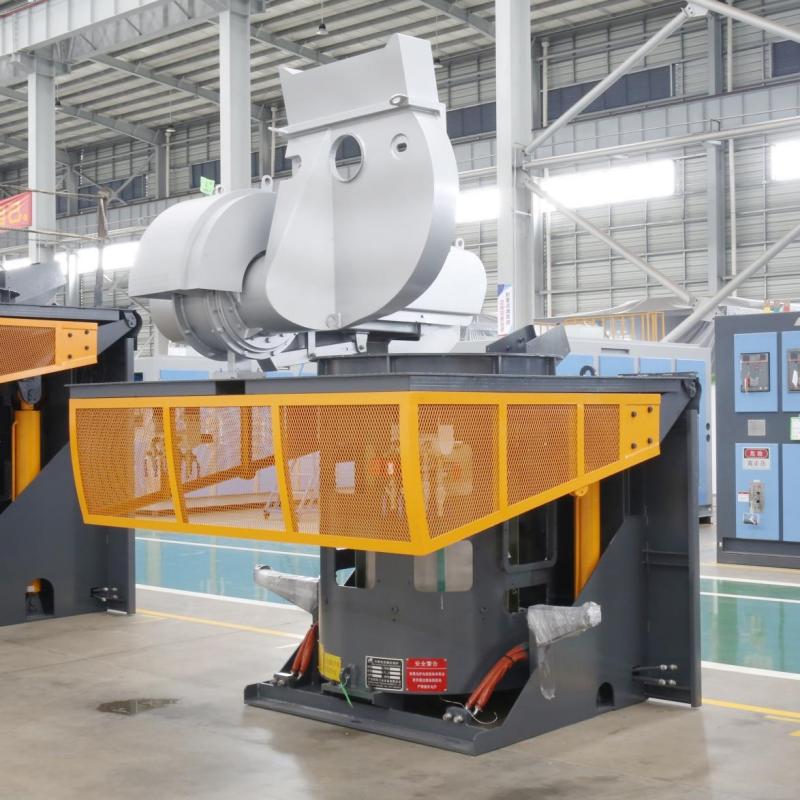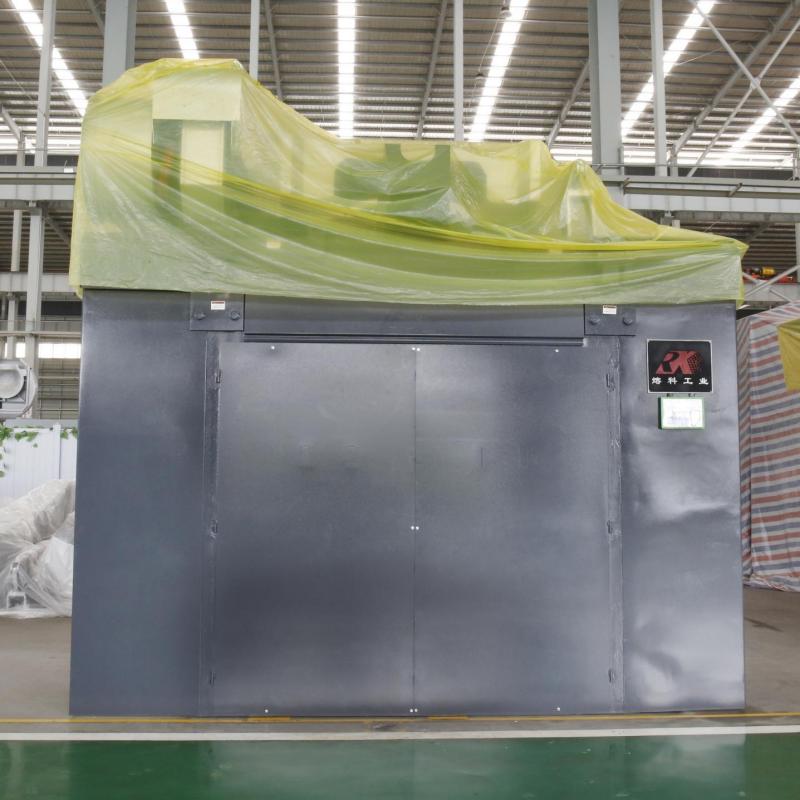
How Induction Melting Furnace Meets the Needs of Today’s Growing Market
The Increasing Demand for Induction Melting Furnace in the Contemporary Industrial Landscape
As the global industrial sector undergoes continuous transformation, driven by technological advancements and environmental imperatives, there is an ever-growing requirement for melting technologies that are not only highly efficient but also environmentally sustainable and dependable. The expansion of industries such as metalworking, foundry operations, and steel manufacturing has intensified the need for sophisticated melting systems. These systems must be capable of handling significantly higher production volumes while simultaneously reducing their ecological footprint. Consequently, energy efficiency has become one of the paramount considerations in today’s industrial marketplace, with corporations increasingly seeking solutions that enhance both productivity and the reduction of operational costs and emissions.

In light of these evolving market demands, the induction melting furnace has rapidly established itself as a leading solution for fulfilling the needs of modern industries. By catering to the rising demand for faster production cycles, energy-saving measures, and improvements in workplace safety, this technology has garnered widespread acceptance. Moreover, as sustainability becomes an ever more critical focus on the global stage, industries are actively searching for technologies capable of minimizing pollution and conserving natural resources. As such, induction melting furnace has emerged as an optimal choice, aligning with both present and future production goals.
Understanding the Induction Melting Furnace: A Technological Overview
An induction melting furnace represents a specialized type of furnace that leverages electromagnetic induction to generate the heat necessary to melt metals. Unlike conventional furnaces, which typically rely on combustion or resistance heating, induction furnaces create heat through the interaction between an alternating magnetic field and a conductive material, usually a metal. This innovative heating mechanism enables induction furnaces to be remarkably efficient in melting metals such as steel, iron, copper, and aluminum, among others.
The widespread use of induction furnaces across diverse industrial sectors can be attributed to several critical factors. Their high energy efficiency, precise control over temperature, and the ability to melt substantial quantities of metal within short timeframes have made them indispensable in numerous applications. A typical induction furnace comprises a copper coil that is cooled by water, and through this coil flows a high-frequency alternating current. When a conductive metal is introduced into the coil, an electromagnetic field is generated, which in turn causes the metal to heat and melt. This non-contact heating process ensures cleaner, safer, and more controlled conditions for metal melting compared to traditional methods.
How the Induction Melting Furnace Operates: A Detailed Breakdown
The operational principles behind an induction melting furnace are rooted in the concept of electromagnetic induction. When an alternating current passes through the coil that encircles the metal, an alternating magnetic field is produced. This field induces an electric current—commonly referred to as eddy currents—within the conductive metal placed inside the furnace. The resistance encountered by these eddy currents as they pass through the metal generates heat, ultimately causing the metal to melt.
The entire melting process can be described through several key stages:
Material Loading (Charging): Initially, the furnace is charged with raw materials or scrap metal.
Induction Heating: A high-frequency alternating current is transmitted through the coil, creating an alternating magnetic field that induces eddy currents in the metal.
Melting Phase: The eddy currents produce heat as a result of the metal’s resistance, which causes it to melt. The process is highly efficient, with only minimal energy lost.
Pouring Phase: Once the desired melting temperature is achieved, the molten metal is poured into molds or castings.
The advantages of induction furnaces extend beyond mere speed and energy efficiency. They offer unparalleled control over the melting process, enabling industries to achieve precise results, particularly in applications where high-purity metals are required. The minimal formation of impurities further reinforces the induction furnace’s suitability for critical industries.
Reasons to Opt for an Induction Melting Furnace in Industrial Applications
As industries increasingly emphasize efficiency, performance, and sustainability, induction melting furnaces are rapidly becoming the preferred choice for a wide range of industrial production applications. The unmatched performance, energy-saving potential, and environmental benefits they offer make them an ideal solution for industries that demand fast, reliable, and cost-effective melting processes.

1. Superior Energy Efficiency
One of the most prominent advantages of induction furnaces is their exceptional energy efficiency. By transferring heat directly to the metal via electromagnetic induction, these furnaces minimize heat loss, thereby significantly lowering energy consumption compared to traditional combustion-based systems. This makes induction furnaces particularly attractive for industries aiming to reduce their energy expenditures and carbon emissions. For instance, Guangdong Rongke Industrial Equipment Co., Ltd. has incorporated cutting-edge technology into its induction furnaces, including the use of oxygen-free copper coils, further enhancing energy efficiency.
2. Precise Temperature Regulation
The ability to control the temperature of the molten metal with extreme precision is a hallmark of induction melting furnaces, and this is a crucial factor for many industrial applications. Precise temperature control ensures that the metal melts uniformly, thereby reducing the risk of overheating or producing defective materials. For example, the Intermediate Frequency Coreless Induction Furnace is specifically engineered to deliver consistent performance, ensuring that high-quality output is achieved while minimizing material waste.
3. Enhanced Safety and Environmental Considerations
Safety concerns are always at the forefront of industrial operations, and induction furnaces excel in providing a safer working environment. The closed-system design of modern induction furnaces significantly reduces the risk of accidents, such as ignition of the coil or explosions caused by dust contamination. Furthermore, induction furnaces generate less noise and lower levels of magnetic radiation, which contributes to a safer, more comfortable workplace.
Guangdong Rongke Industrial Equipment Co., Ltd. has integrated several advanced safety features into its Intermediate Frequency Coreless Induction Furnace, such as a patented leakage alarm system. This system continuously monitors the furnace for any potential leaks in the lining and triggers real-time alerts if molten metal makes contact with the current detection electrodes, ensuring that hazards are detected promptly and addressed efficiently.
Case Study: The Intermediate Frequency Coreless Induction Furnace
A prime illustration of state-of-the-art induction furnace technology is embodied in the Intermediate Frequency Coreless Induction Furnace, produced by Guangdong Rongke Industrial Equipment Co., Ltd. This model boasts several distinctive features that set it apart from its competitors.
Noise Reduction and Comprehensive Safety Systems
One of the furnace’s most noteworthy features is its ability to operate at 30% lower noise levels compared to other similar systems. The fully enclosed furnace shell design plays a crucial role in preventing coil ignition due to dust contamination. Additionally, the furnace is equipped with a secondary magnetic shielding system, which reduces magnetic radiation to just 10% of what is typically emitted by comparable products—well below national safety standards.
Enhanced Energy Efficiency and Durability
The Intermediate Frequency Coreless Induction Furnace is designed with a highly efficient coil system. Constructed from TU1-grade oxygen-free copper, this coil is engineered for maximum durability and optimized for energy efficiency. The double-coil technology integrated into the design improves heat retention and reduces overall energy consumption, thus increasing the furnace’s operational efficiency.

Advanced Leakage and Grounding Alarm Technologies
Safety remains a top priority in the design of the Intermediate Frequency Coreless Induction Furnace. The furnace is equipped with an intelligent leakage detection system, which instantly detects any molten metal that seeps through the lining and triggers an alarm. This prevents further damage to the furnace and protects operators. Additionally, the grounding alarm system adds another layer of safety by detecting leakage currents, which may indicate potential hazards such as elevated conductivity in the cooling system.
Conclusion: The Strategic Advantages of Induction Melting Furnaces
In today’s fast-paced and highly competitive industrial environment, selecting the right melting technology is crucial for achieving operational efficiency, safety, and cost savings. Induction melting furnaces, particularly the Intermediate Frequency Coreless Induction Furnace offered by Guangdong Rongke Industrial Equipment Co., Ltd., provide a comprehensive solution that integrates cutting-edge technology, energy efficiency, and advanced safety features. Whether in the metalworking, foundry, or steel industries, these furnaces deliver the performance, reliability, and sustainability required to thrive in the modern industrial marketplace while adhering to stringent environmental and safety regulations.




